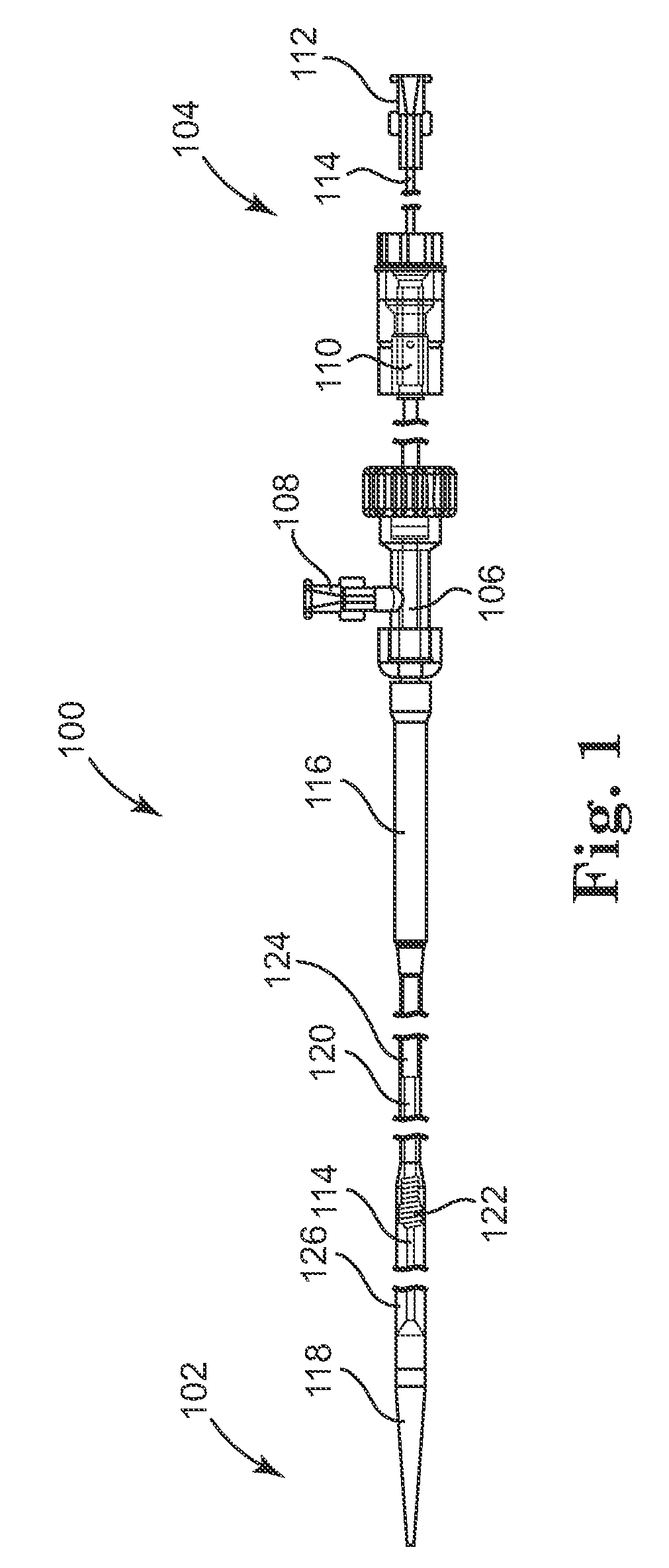Infundibular reducer device delivery system and related methods
a reducer device and infundibular technology, applied in the field of cardiac valve disease treatment using prosthetic valves, can solve the problems of inability to maintain blood flow in a single direction, inability to properly function, and inability to noticeably affect the function of the valve, so as to reduce the bulkiness of the delivery system, facilitate intraluminal inserting and removal, and facilitate re-compression
- Summary
- Abstract
- Description
- Claims
- Application Information
AI Technical Summary
Benefits of technology
Problems solved by technology
Method used
Image
Examples
Embodiment Construction
[0028]With reference to the accompanying figures, wherein like components are labeled with like numerals throughout the figures, an illustrative delivery system and method of the delivery of infundibular reducer devices is disclosed, taught and suggested by the multiple embodiments.
[0029]The embodiments of the invention described below are not intended to be exhaustive or to limit the invention to the precise forms disclosed in the following detailed description. Rather the embodiments are chosen and described so that others skilled in the art may appreciate and understand the principles and practices of the invention.
[0030]The principles of the invention may be practiced in any instance in which it is desired to deliver a medical device intraluminally to a desired anatomic site. For the purpose of discussion, the invention will generally be described in the context in which the medical device being loaded and delivered is a prosthetic valve, and specifically an infundibular reducer...
PUM
 Login to View More
Login to View More Abstract
Description
Claims
Application Information
 Login to View More
Login to View More - R&D
- Intellectual Property
- Life Sciences
- Materials
- Tech Scout
- Unparalleled Data Quality
- Higher Quality Content
- 60% Fewer Hallucinations
Browse by: Latest US Patents, China's latest patents, Technical Efficacy Thesaurus, Application Domain, Technology Topic, Popular Technical Reports.
© 2025 PatSnap. All rights reserved.Legal|Privacy policy|Modern Slavery Act Transparency Statement|Sitemap|About US| Contact US: help@patsnap.com



